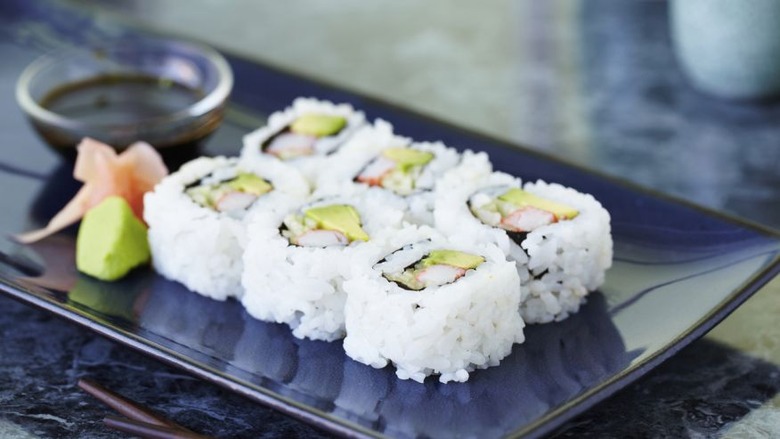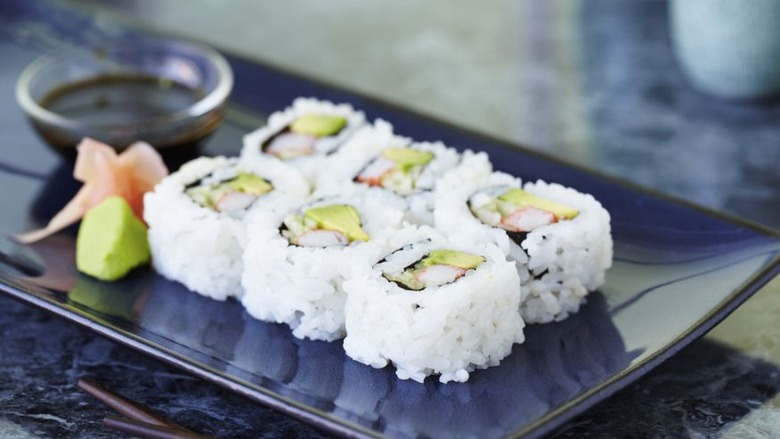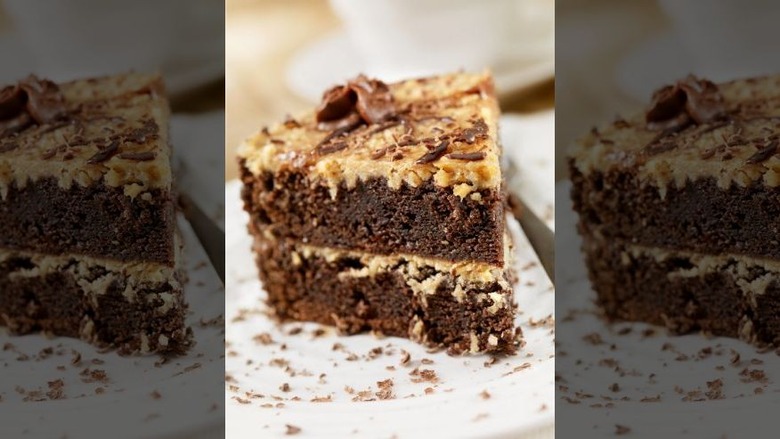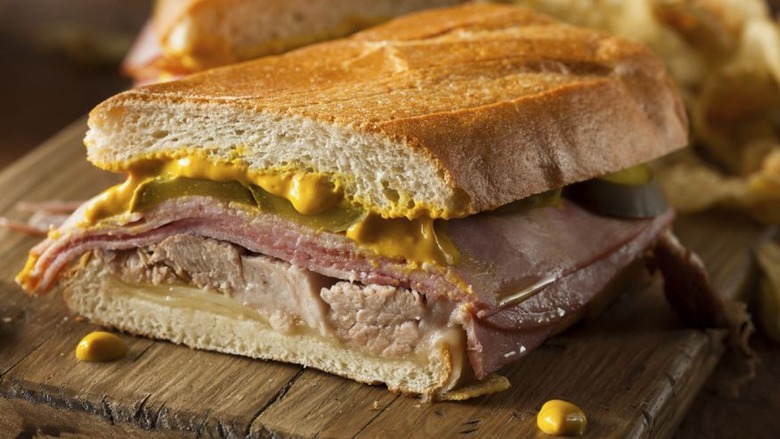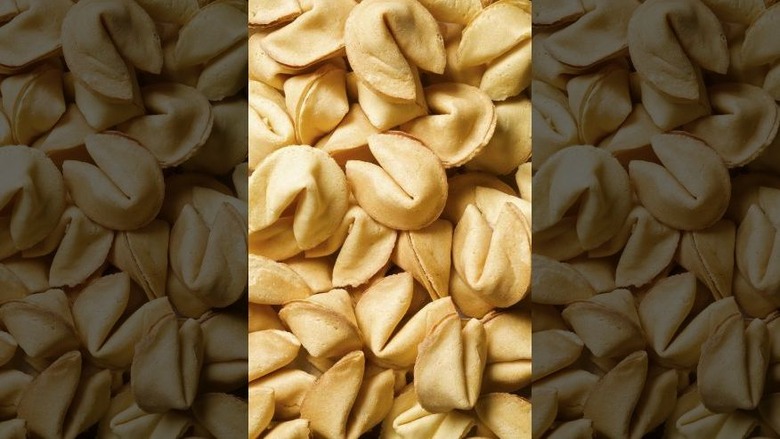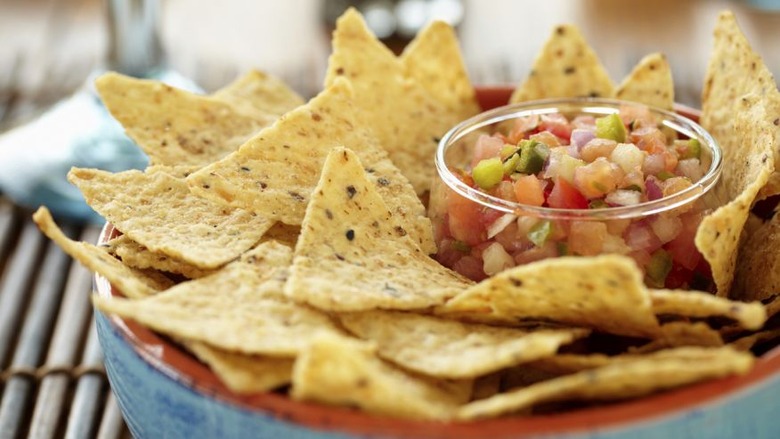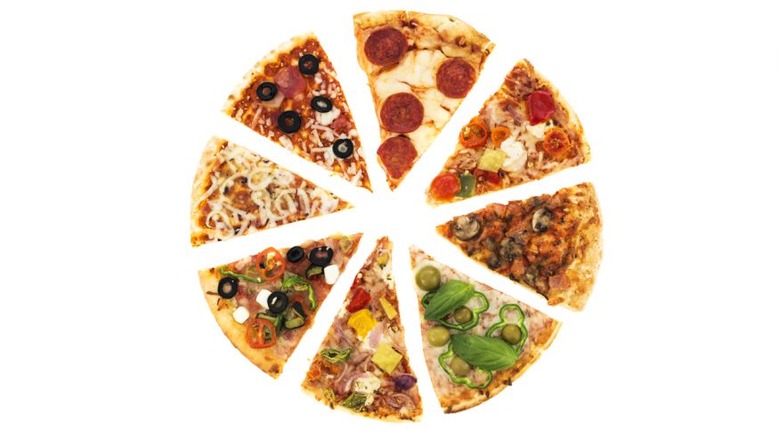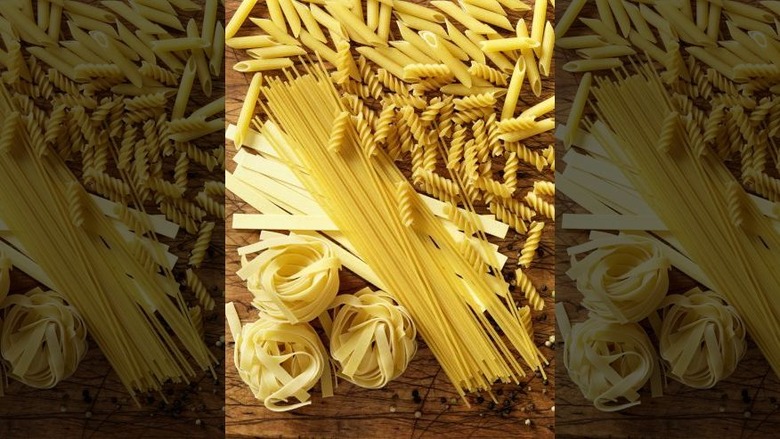8 'Culturally Appropriated' Foods That Are Bigger And Better Than Ever
Lena Dunham is supporting students at her alma mater who have accused the Oberlin cafeteria of "culturally appropriating" sushi. But have the ticked off students– and star– gone too far with this buzzworthy phrase?
Dunham is accusing the cafeteria of "disrespecting certain cuisines." But foods are constantly changing overtime as chefs tweak recipes and borrow ingredients from other cultures. Sometimes chefs change recipes to suit palates not quite ready for the fully spiced original. Plus, there are plenty of dishes that sound foreign, but were actually born here right in the U.S.
Is it cultural appropriation to just eat something that tastes good even it doesn't come from where you live? The U.S. is a major melting pot of different cuisines and cultures. Here are some of our favorite foods that have evolved overtime into American favorites.
1. The California Roll
Sushi may be the quintessential Japanese food but did you know that the most commonly eaten sushi roll in the U.S.– the California roll– was created in North America?
Japanese chef Hidekazu Tojo studied the craft of sushi making in Osaka before immigrating to Vancouver, Canada in 1971.
Tojo realized that most Westerners did not eat raw fish or enjoy the taste seaweed. The chef told The Globe and Mail that he "made the roll inside out. People loved it. A lot of people from out of town came to my restaurant." His new roll was influenced by traditional Japanese cuisine, but had a distinctly Western appeal.
Since many people came from Los Angeles to visit his restaurant, Tojo called his new creation without raw fish the "California roll."
2. German Chocolate Cake
Think this deliciously decadent chocolate confection is a product from dear old Deutschland? Think again.
According to the American Baker's Chocolate Company, in 1852, American baker Samuel German developed a new type of chocolate which had more sugar than previous products.
The recipe for a layered cake topped with coconut-pecan frosting was invented by Mrs. George Clay from Dallas, who used German's sweeter chocolate to create the new treat. She called it "German's Chocolate Cake" after the man who made it all possible. In 1957, the cake was called the "Recipe of the Day" in the Dallas Morning Star.
Many different versions of the cake have been fashioned over the years.Some bakers like to add chocolate frosting around the outside layers, garnish the top with bright red cherries, or even drizzle the whole thing with ooey-gooey caramel.
3. Cuban Sandwiches
This souped-up ham and cheese sandwich originated in the late 1800s in Key West,Ybor City, Tampa Bay, Fla., where many Cuban immigrants lived, according to the Tampa Bay Times.
In the early 1900s, Cuban workers brought a cold sandwich, what they call "mixtos," to work. The dry, crusty bread made it the ultimate portable meal.
The sandwich became a common lunch for Cuban immigrants working in the cigar factories and sugar mills during the 1920s because of the easiness in how it was put together and the relative cheapness of ingredients.
By the 1960s, Cuban sandwiches also became common in Miami cafeterias and restaurants– and the invention of electric sandwich presses and toasters made it even easier to craft the special sandwich.
Though chefs have switched up certain ingredients over the overs, most people agree that a classic Cuban contains Swiss cheese, ham, roasted pork and pickles. It's become an American favorite today, popping up on menus from Florida to California.
4. Fortune Cookies
Many have claimed to be behind this sweet cookie, commonly consumed in Chinese restaurants. But there's one place where this cookie most likely wasn't born– China.
Makoto Hagiwara of Golden Gate Park's Japanese Tea Garden in San Francisco claims to have invented the fortune cookies in his tea gardens during the 1890s, according to infoplease.com
But David Jung of the Hong Kong Noodle Company in Los Angeles claimed to have invented the cookie in 1918, resulting in a federal court case which was settled in favor of Hagiwara.
Over the years, even more inventors have laid claim to pioneering the famous, folded cookie. Seiichi Kito, the founder of Fugetsu-do of Little Tokyo in Los Angeles, also claimed to have invented the famous cookie with small sheets of paper wedged inside in 1903, according to About.com.
The debate of where exactly it was created continues today, but the cookie is now found in thousands of Chinese carry-out restaurants across the U.S.
5. Tortilla Chips
Tortillas may have roots in ancient Mexican cuisine, but the crunchy, salty snack we call the tortilla chip today was made famous in the U.S.
The creator of these chips, Rebecca Webb Carranza was born in Durango, Mexico.Her husband Mario co-owned a Mexican deli and El Zarape Tortilla Factory in Los Angeles in the 1940s.
The couple had an automated tortilla machine but, when the tortillas would come out ripped or stale, the creative cooks would cut the misshapen tortillas up and fry them, instead of throwing them out and wasting food.
While these tortilla chips were created as a Mexican food by Mexican immigrants, the "Tort Chips" industry set up by the Carranzas in Southern California is a story of American innovation.
6. Pizza
Originally created as a food for the poor in 18th century Naples, Italy, the pizza added inexpensive tomato and mozzarella to their bread. The pizza was first introduced to the U.S. in the 19th century by Italian immigrants in Chicago, Boston, and New York City.
After returning from Italy during World War II, American soldiers brought versions of the entrée home and pizza shops started popping up all over the country.
Over the years companies like Domino's, Papa John's and Pizza Hut have Americanized the traditional dish with different cheeses, meats, vegetables– and even hot dogs. Unlike Italian pizza which has a thin crust, Chicago-style pizza is known for its super deep, pie-like portions.
7. Pasta
Pasta may be synonymous with Italian cuisine in the U.S. today. But noodles didn't originate on the boot-shaped peninsula.
According PBS.org, pasta is likely a descendant of Asian noodles. Noodles existed in China before Marco Polo's trip to China in the 13th Century, where the explorer noted his introduction to a special plant to create a meal similar to barley flour, which the Chinese used to make pasta-like dishes.
While archeologists believe noodle-like products were first invented in Asia, pasta was actually first introduced in America by Spanish settlers in the 18thCentury– not Italians.
Today, Italian-Americans have popularized the dry pasta, and now Italian restaurants from coast-to-coast serve up endless renditions, of spaghetti, lasagna, farfalle, penne and more.
8. Hot Dogs
Frankfurt-am-Main, Germany, is commonly credited with originating the frankfurter. But, according to hot-dog.org, but others say the rolled meat, known as a "dachshund" or "little-dog" sausage – was created in the late 1600's by Johann Georghehner, a butcher, living in Coburg, Germany.
While eating the sausage with bread was a common German tradition, according to Hot dog historian Bruce Kraig at Roosevelt University, the American hot dog was an integration created by many European sausage butchers.
The American hot dog gained popularity in Chicago in the late 19th century due to an influx of foreign visitors. In 1904, during the St. Louis "Louisiana Purchase Exposition" Bavarian concessionaire, Anton Feuchtwanger introduced the hot sausages inside the soft bun rolls.
Mixing the German food culture with North American butchery, the modern hot dog is a product of the American melting pot.
Related:
- World's most bizarre Oreos
- Taco Bell sued for allegedly discriminating against deaf customer
- Chow down at Cleveland's best restaurants
- The truth about baby corn
- Internet bashes Trump's vice presidential pick Mike Pence for eating at Chili's
